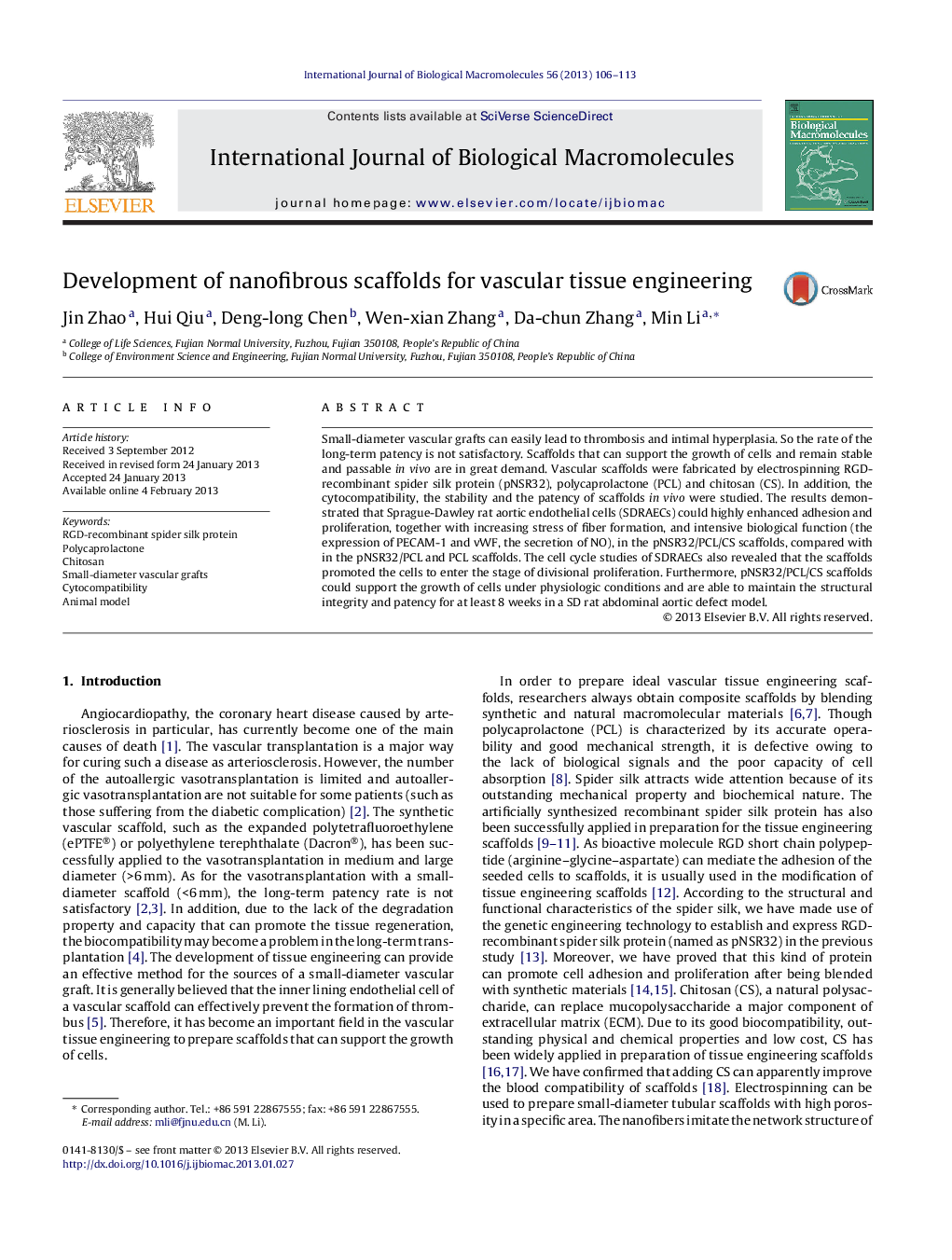| کد مقاله | کد نشریه | سال انتشار | مقاله انگلیسی | نسخه تمام متن |
|---|---|---|---|---|
| 8333844 | 1540264 | 2013 | 8 صفحه PDF | دانلود رایگان |
عنوان انگلیسی مقاله ISI
Development of nanofibrous scaffolds for vascular tissue engineering
ترجمه فارسی عنوان
توسعه داربست های نانوبلوری برای مهندسی بافت عروقی
دانلود مقاله + سفارش ترجمه
دانلود مقاله ISI انگلیسی
رایگان برای ایرانیان
کلمات کلیدی
موضوعات مرتبط
علوم زیستی و بیوفناوری
بیوشیمی، ژنتیک و زیست شناسی مولکولی
زیست شیمی
چکیده انگلیسی
Small-diameter vascular grafts can easily lead to thrombosis and intimal hyperplasia. So the rate of the long-term patency is not satisfactory. Scaffolds that can support the growth of cells and remain stable and passable in vivo are in great demand. Vascular scaffolds were fabricated by electrospinning RGD-recombinant spider silk protein (pNSR32), polycaprolactone (PCL) and chitosan (CS). In addition, the cytocompatibility, the stability and the patency of scaffolds in vivo were studied. The results demonstrated that Sprague-Dawley rat aortic endothelial cells (SDRAECs) could highly enhanced adhesion and proliferation, together with increasing stress of fiber formation, and intensive biological function (the expression of PECAM-1 and vWF, the secretion of NO), in the pNSR32/PCL/CS scaffolds, compared with in the pNSR32/PCL and PCL scaffolds. The cell cycle studies of SDRAECs also revealed that the scaffolds promoted the cells to enter the stage of divisional proliferation. Furthermore, pNSR32/PCL/CS scaffolds could support the growth of cells under physiologic conditions and are able to maintain the structural integrity and patency for at least 8 weeks in a SD rat abdominal aortic defect model.
ناشر
Database: Elsevier - ScienceDirect (ساینس دایرکت)
Journal: International Journal of Biological Macromolecules - Volume 56, May 2013, Pages 106-113
Journal: International Journal of Biological Macromolecules - Volume 56, May 2013, Pages 106-113
نویسندگان
Jin Zhao, Hui Qiu, Deng-long Chen, Wen-xian Zhang, Da-chun Zhang, Min Li,
